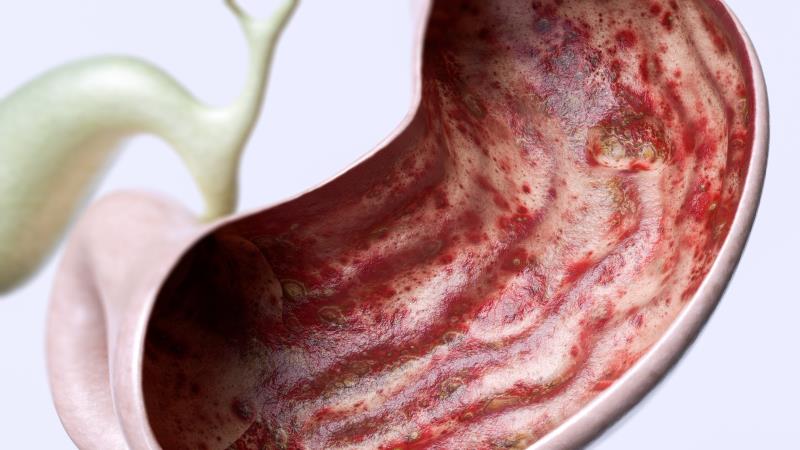
Among patients with a large perforated peptic ulcer (PPU), undergoing omental patch repair confers comparable perioperative outcomes as gastrectomy, a retrospective local study shows.
“Omental patch repair is the mainstay of surgical management and gastric resectional procedures are advocated for a large/giant ulcer or suspected malignancy,” according to the researchers led by Dr Vishal Shelat from Tan Tock Seng Hospital, Singapore. However, for large PPU, there have been controversial findings on which strategy is better — with some studies showing higher morbidity with omental patch repair vs gastrectomy and vice versa.
The retrospective single-centre study included 110 patients (median age 69.1 years, 66.4 percent female) with a large PPU (≥20 mm) who underwent omental patch repair (n=52) or gastrectomy (n=58). About 38.2 percent of the patients presented at the institution within 24 hours from abdominal pain onset. [Eur J Trauma Emerg Surg 2019;doi:10.1007/s00068-019-01237-8]
Overall, intra-abdominal collection, reoperation, postoperative leakage, and all-cause mortality were reported in 16.4 percent, 6.4 percent, 11.8 percent, and 19.1 percent of the patients, respectively. There were no significant differences between omental patch repair and gastrectomy in the perioperative outcomes: intra-abdominal collection (p=0.793), reoperation (p=0.809), postoperative leakage (p=0.813), and all-cause mortality (p=0.736).
Using prediction models, the researchers found that the risk of mortality was similarly high in both groups of patients, as reflected by the proportion of patients showing ASA class ≥3 (p=0.988), MPI ≥21 (p=0.420), PULP* score >7 (p=0.677), and Boey’s score >1 (p=0.755).
Furthermore, perioperative outcomes were also comparable between the two strategies in a subgroup of patients with giant PPUs (≥30 mm), which are typically considered to be less amenable for omental patch repair.
Similarly, there were no significant differences between the two strategies in a subgroup of patients with SIRS** criteria and/or shock, be it intra-abdominal collection (p=0.729), reoperation (p=0.522), postoperative leakage (p=0.674), or all-cause mortality (p=0.229).
“Due to the comparable perioperative outcomes in both groups of patients, we propose that the choice of surgical technique should not be dictated by conventional belief,” said Shelat and co-authors.
“Surgeon preference and expertise, anticipated risks of anastomotic leak, suspicion of malignancy, patient choices and preferences, and haemodynamic stability of patients should be used as a guide to make clinical decision,” they added.
The researchers also advised that clinicians should discuss on the potential risks and benefits of each intervention with their patients if time allows such that patients understand the options available.
“It is possible that though gastric resection reduces the potential suture line leak risk, resection surgery itself comes with its own set of risks and this effect balances any potential benefit,” said the researchers.
As this is a retrospective single-centre study and the sample size was small, the researchers suggested that prospective multicentre randomized studies be conducted in the future to validate the results.